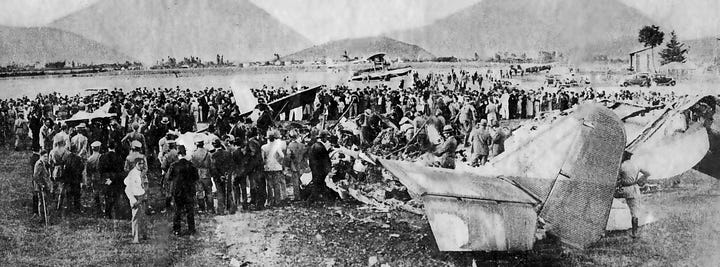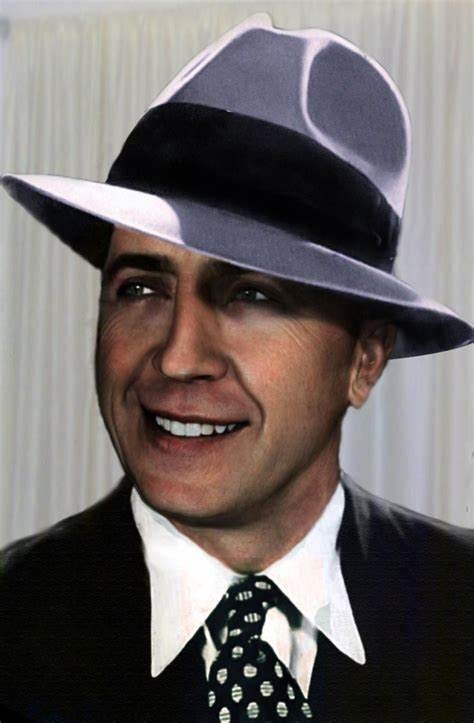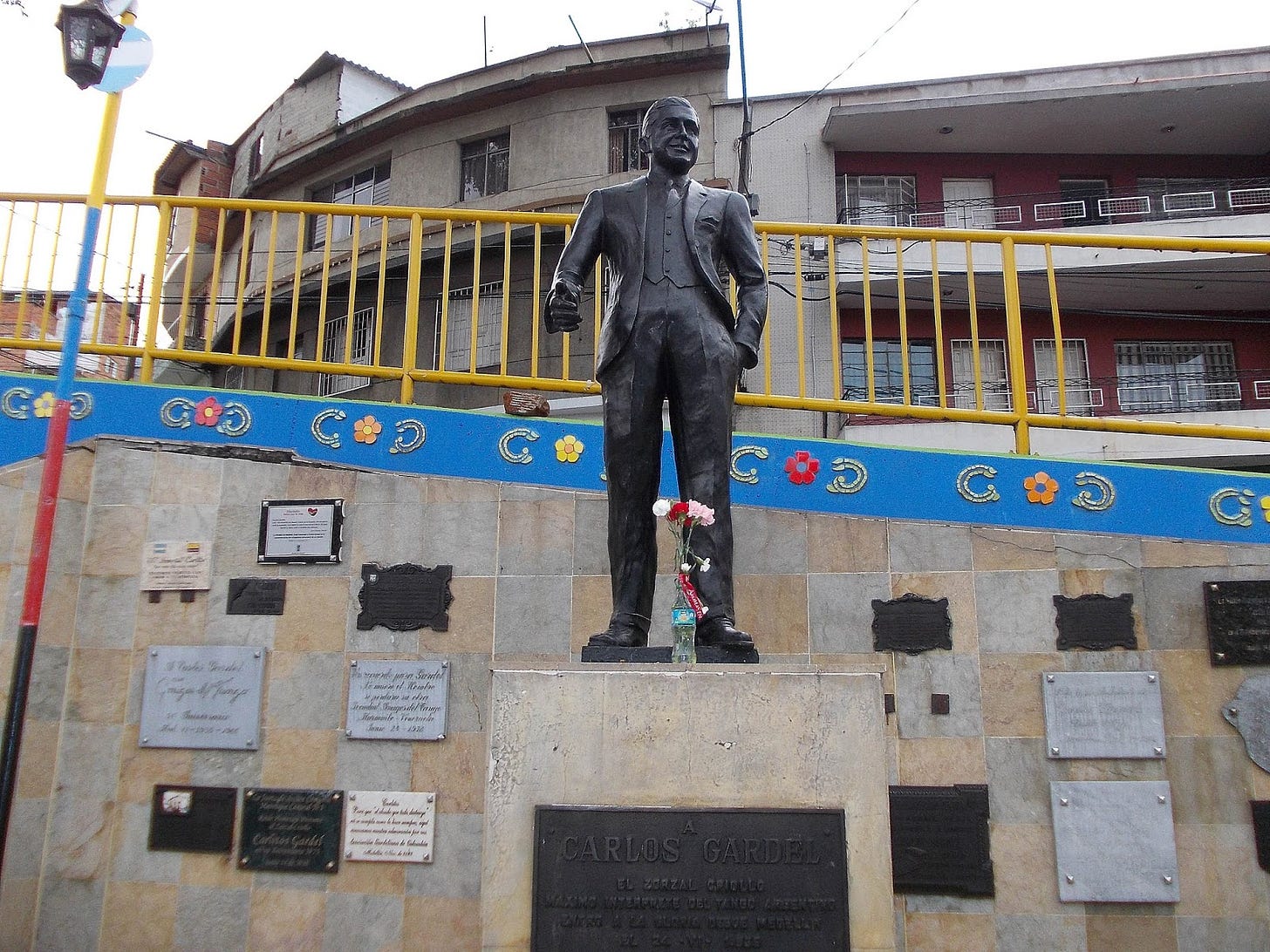The Echo of Tango: Carlos Gardel's Tragic Finale in Medellin


June 24, 1935. French-Argentinian* Tango legend, Carlos Gardel, boards a plane in Medellín. What should've been routine turned catastrophic.
Two planes collided on the runway at 'Las Playas' Aerodrome, now known as the Olaya Herrera airport.
Behind the wheel were pilots from SCADTA (now Avianca) and SACO. Their rivalry was no secret, mirroring the larger, tense competition between their airlines, which themselves were backed by U.S. and German interests.
Whispers suggest their mutual dislike might've escalated to reckless aerial stunts.
The official account states that the airplane, a Fokker F-31, was attempting to take off when it collided with another aircraft on the runway. The impact caused a fire, and both planes were engulfed in flames.
The crash killed 17 people in total, including Colombian aviation legend Ernesto Samper Mendoza flying Gardel, and all seven passengers on the other plane.
On that fateful day, Gardel was joined by Alfredo Le Pera, his lyricist; Guillermo Barbieri, his guitarist; and Corpas Moreno, his secretary.
Aftermath
The aftermath was a disaster. Blame was thrown around, including from Colombia's president, and was mostly directed at the German side.
The 'official' story is that the runway or strong winds played a role, but the evidence is mixed.
Gardel's story did not end there. Initially buried in Medellín, his remains traveled through Colombia, Panamá, a brief stop in the United States, and finally to Argentina by 1936.
He's now buried in Buenos Aires' Chacarita Cemetery, next to his mother.
In Medellín's Manrique neighborhood, a statue of Carlos Gardel acts as a quiet tribute of the legendary artist, expressing the city's enduring respect for him.
The music has evolved, but Gardel's legacy?
Timeless.
Note*: There is no consensus on the place and date of his birth. The Uruguayan hypothesis maintains that he was born in Tacuarembó (Uruguay) on December 11, between 1883 and 1887. The French hypothesis argues that he was born in Toulouse (France) on December 11, 1890. There is consensus on the fact that he lived since his childhood in Buenos Aires and became an Argentine citizen in 1923.




